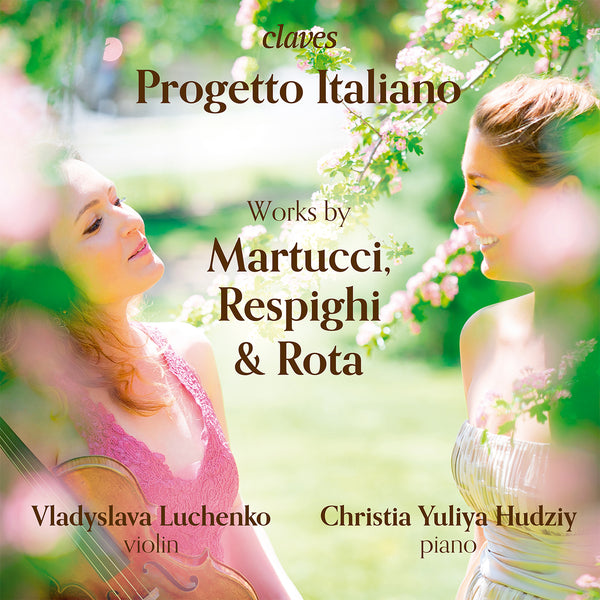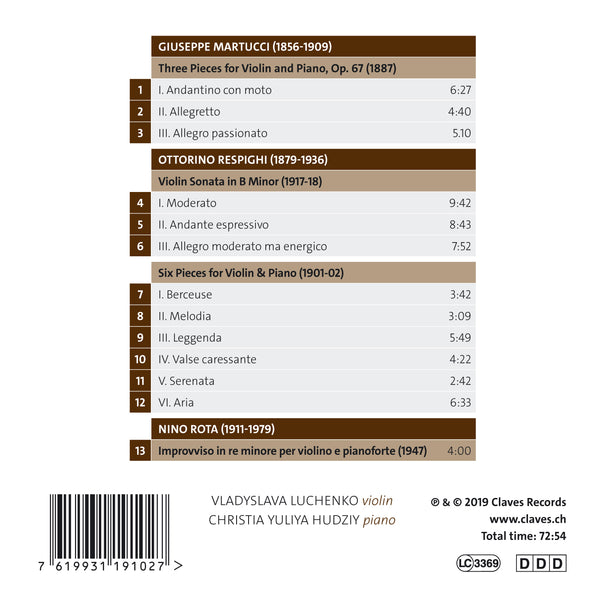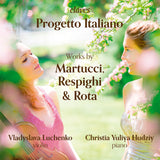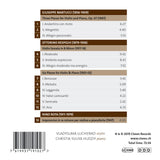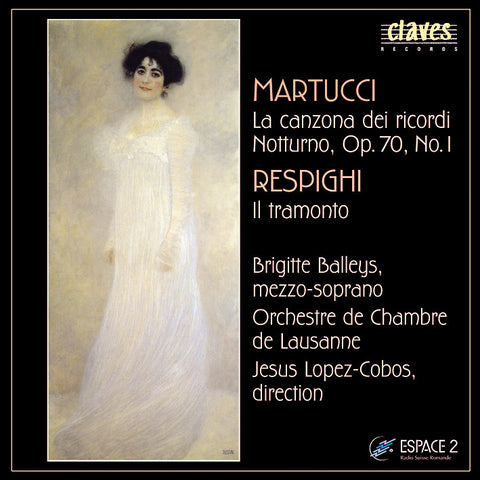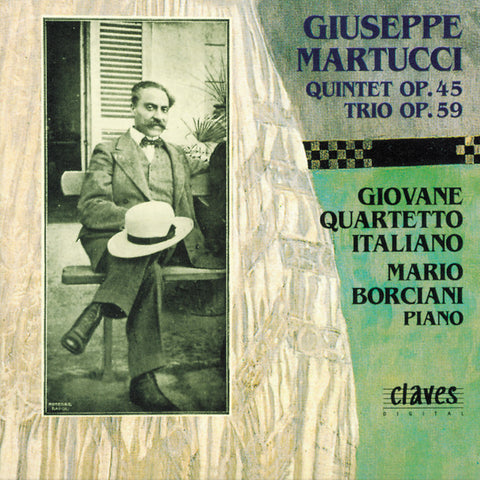(2019) Progetto Italiano: Works by Martucci, Respighi & Rota
Category(ies): Chamber Piano Rarities
Instrument(s): Piano Violin
Main Composer: Giuseppe Martucci
CD set: 1
Catalog N°:
CD 1910
Release: 18.10.2019
EAN/UPC: 7619931191027
This album is now on repressing. Pre-order it at a special price now.
CHF 18.50
This album is no longer available on CD.
This album has not been released yet. Pre-order it from now.
CHF 18.50
This album is no longer available on CD.
CHF 18.50
VAT included for Switzerland & UE
Free shipping
This album is no longer available on CD.
VAT included for Switzerland & UE
Free shipping
This album is now on repressing. Pre-order it at a special price now.
CHF 18.50
This album is no longer available on CD.
This album has not been released yet.
Pre-order it at a special price now.
CHF 18.50
This album is no longer available on CD.
CHF 18.50
This album is no longer available on CD.
PROGETTO ITALIANO: WORKS BY MARTUCCI, RESPIGHI & ROTA
Progetto Italiano
The paradox of Italy is that it largely invented instrumental music - and its corollary, virtuosity - in the Baroque period, but then more or less left it in foreign hands until the 20th century. Opera, invented at the same time as the sonata at the beginning of the baroque era, then reigned supreme. Despite the memory of Paganini or the efforts of the Florence Quartet (which would do much to promote Beethoven’s last quartets), at the end of the 19th century composers still needed some courage to dedicate themselves to instrumental music, which brought little in the way of prizes or rewards. Giuseppe Martucci was born in Capua in 1856 and died in Naples in 1909, and with Giovanni Sgambati was one of the pioneers of a revival of instrumental music in Italy.
He studied at the Naples Conservatory, where he soon became professor of piano (1880). He later became head of the Bologna Liceo Musicale (1886) and finished his career as director of the Naples Conservatory (1902). A celebrated pianist, he quickly devoted himself to conducting and composition. A fervent admirer of German music, his broad tastes encompassing Schumann, Brahms, and Wagner (whom he introduced to Italy), he was highly respected during his lifetime. However, the trend towards Italian music taken after 1918 and the developments led by Casella, Pizzetti and Malipiero left little room for the memory of a pioneer influenced by German Romantic culture.
The bulk of the Martucci’s oeuvre, rehabilitated by recordings but still not widely known, remains to be discovered by a wider audience.His Three Pieces for Violin and Piano, Op. 67 (1887), are little ‘post-Schumannian’ jewels. Andantino (E major), with its dreamy mood, presents a subtle variant on the traditional three-part structure, where the central section drifts away from the first section and then returns to it in a varied form.
The second piece, Allegretto in G sharp minor, is darker in tone; also in three parts, with a discreet reminder of the main theme of Andantino, it has a brilliant central section, closing with a recitative leading to a reprise of the first section. The third piece, Allegro passionato, more cheerful, looks to Neapolitan folklore and recalls something of the atmosphere of certain passages of Liszt or Chopin.
(2019) Progetto Italiano: Works by Martucci, Respighi & Rota - CD 1910
Progetto Italiano
The paradox of Italy is that it largely invented instrumental music - and its corollary, virtuosity - in the Baroque period, but then more or less left it in foreign hands until the 20th century. Opera, invented at the same time as the sonata at the beginning of the baroque era, then reigned supreme. Despite the memory of Paganini or the efforts of the Florence Quartet (which would do much to promote Beethoven’s last quartets), at the end of the 19th century composers still needed some courage to dedicate themselves to instrumental music, which brought little in the way of prizes or rewards. Giuseppe Martucci was born in Capua in 1856 and died in Naples in 1909, and with Giovanni Sgambati was one of the pioneers of a revival of instrumental music in Italy.
He studied at the Naples Conservatory, where he soon became professor of piano (1880). He later became head of the Bologna Liceo Musicale (1886) and finished his career as director of the Naples Conservatory (1902). A celebrated pianist, he quickly devoted himself to conducting and composition. A fervent admirer of German music, his broad tastes encompassing Schumann, Brahms, and Wagner (whom he introduced to Italy), he was highly respected during his lifetime. However, the trend towards Italian music taken after 1918 and the developments led by Casella, Pizzetti and Malipiero left little room for the memory of a pioneer influenced by German Romantic culture.
The bulk of the Martucci’s oeuvre, rehabilitated by recordings but still not widely known, remains to be discovered by a wider audience.His Three Pieces for Violin and Piano, Op. 67 (1887), are little ‘post-Schumannian’ jewels. Andantino (E major), with its dreamy mood, presents a subtle variant on the traditional three-part structure, where the central section drifts away from the first section and then returns to it in a varied form.
The second piece, Allegretto in G sharp minor, is darker in tone; also in three parts, with a discreet reminder of the main theme of Andantino, it has a brilliant central section, closing with a recitative leading to a reprise of the first section. The third piece, Allegro passionato, more cheerful, looks to Neapolitan folklore and recalls something of the atmosphere of certain passages of Liszt or Chopin.
Return to the album | Read the booklet | Composer(s): Giuseppe Martucci | Main Artist: Vladyslava Luchenko







